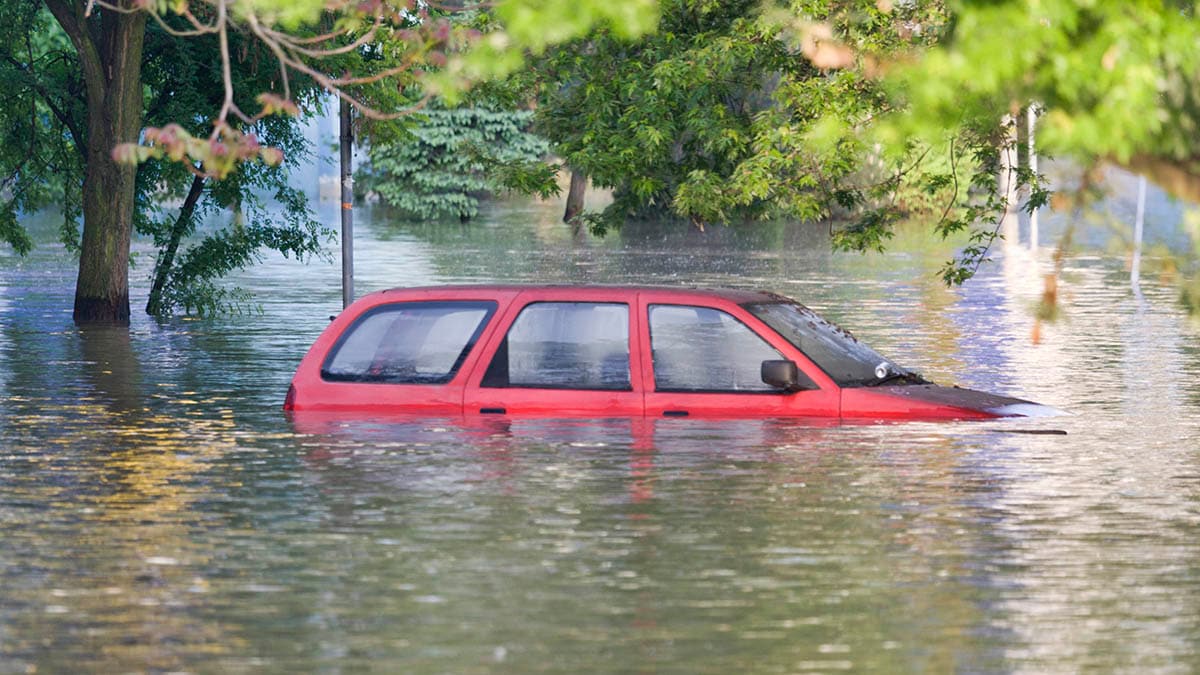Finding your car submerged or partially underwater because of a flood is an incredibly stressful situation. The damage caused by floodwaters on a vehicle’s mechanical systems, electronics, and interior can be extensive. However, prompt and appropriate action can reduce the impact of your car’s flood damage. Keep reading for a guide on what steps to take when you have a flooded car.
- Maintain physical safety. Your health and safety are more important than your automobile. Do not wade into still water deeper than your knees to reach the car. Swiftly moving current that is ankle-deep can sweep you off your feet. Avoid putting yourself at risk, and wait until it’s safe to reach the vehicle.
- Prevent additional damage. Do not try to start the car until a qualified mechanic has looked at it. If water has entered the cylinders, attempting to turn on the engine can cause significant damage. Lift the hood and disconnect the battery while wearing dry gloves to prevent electrical shorts and further damage to the car’s complex electrical system.
- Assess the damage. Look for a watermark on the car’s exterior and interior to gauge the extent of the flood impact. Inspect the trunk, taillights, and headlights, and check the engine bay when disconnecting the battery.
- Document everything. Get detailed photos or videos of the car and the waterline. Take the images from various angles to capture evidence to support your insurance claim. Make a comprehensive list of all items affected by the floodwaters.
- Contact your insurance company. Do not delay contacting your insurance agent. Meanwhile, review your policy to understand your insurance coverage. Some policies exclude flood damage. Keep copies of all communications, records, and documents related to the insurance claim. Arrange for a professional assessment of the flooded car.
- Start the recovery process. Use a wet/dry vacuum to remove standing water from the car’s seats and floorboards. If the weather has improved, open the doors and windows for air circulation to promote drying out the car.
- Professional assessment. Follow guidance from your insurance company. In some cases, insurers will total the car after determining the cost of mechanical and electrical repairs, cleaning, and odor management exceed the vehicle’s value.
- A professional mechanic must inspect the car before starting the engine. Their recommendations may include replacing the oil and other fluids and testing the electrical system for corrosion and short circuits. It is also necessary to check the functionality of electrical components, including the lights, windows, seats, infotainment system, and advanced safety and driver assist features.
- A professional cleaning service is invaluable for an in-depth clean-up and to avoid long-term damage. A thorough cleaning will help ensure all parts are cleaned and dried to prevent mold growth and corrosion, neutralize odors, and address lingering smells.
- Take preventive measures. Regular checks and maintenance of your car’s seals and gaskets can help ensure they remain watertight. Consider adding comprehensive insurance coverage if you live in a flood-prone area. If weather forecasters and local officials anticipate flooding, move your vehicles to higher ground or a multi-level parking garage. For your safety, always be cautious driving in heavy rain, and never drive through standing water.
Working through the aftermath of a flooded car can be daunting, but with patience you can manage the situation. Acting quickly will help minimize damage, improve the likelihood of salvaging your vehicle, and smooth the insurance claim process and shopping for a new car, if necessary.
Read Related Articles:
- Is It Safe To Drive a Car Damaged in a Flood?
- Flood-Damaged Cars: How to Spot and Avoid Them
- Flooded Car? FAQs for Affected Owners and Shoppers








